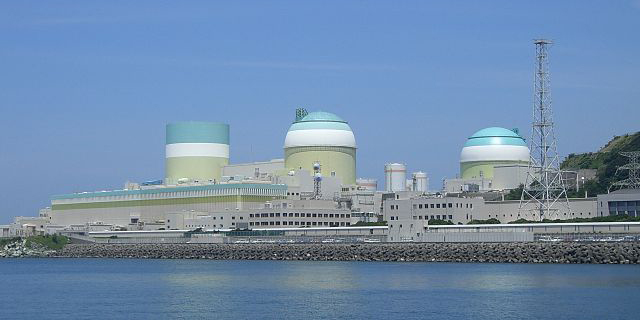
Stress data obtained at the CNBC contributed to a guide that is used by nuclear operators in Japan to inform decisions about expensive replacements of in-core components that may be susceptible to cracking.
Source: Canadian Neutron Beam Centre (CNBC)
Contact: cnbc@cnl.ca
Image: Ikata Nuclear Power Plant
Nuclear nations have billions of dollars invested in each of their nuclear power reactors. Operating these stations for many years is essential to realising their return on investment by generating large amounts of emissions-free electricity. The longer they run, the greater the economic and environmental benefit.
Japan’s 50 nuclear reactors plan for a 60-year operating life. Seventeen of these reactors are older than 30 years and are undergoing maintenance activities to reduce the impacts of aging. The Japanese nuclear operators and vendors cooperated to fund a project by the Japan Nuclear Energy Safety Organization (JNES) to improve methods of assessing and responding to the aging process, meaning, the degradation over time of metallic materials in the reactor core due to high radiation fields.

CNBC staff load a special chamber containing the highly radioactive steel sample onto the neutron beamline for stress measurements.
As part of the JNES effort, Nippon Nuclear Fuel Development Co. (NFD) collaborated with the CNBC over several years to study one of six kinds of degradation; specifically, cracking caused by a combination of stress, corrosion and radiation, known as “irradiation-induced stress-corrosion cracking” (IASCC).
The CNBC measured stresses in various welded samples of stainless steels that are used to construct the core of Japan’s reactors and that are susceptible to cracking over the lifetime of the reactor. The samples were then irradiated in the Japan Materials Testing Reactor for up to 100 days, to accumulate damage from fast-neutron bombardment of the steel, thus simulating the conditions of nuclear power reactors. As a result, the samples became highly radioactive, which required the CNBC to develop a special container to hold them safely on the neutron beamline, to enable measurements of the stress distributions near the welding lines. The CNBC is the only neutron beam facility in the world with this capability. The results of this research conducted from 2000 to 2007 showed that the fast-neutron radiation helps to relax the stresses in the welded samples, thus reducing one factor that could contribute to cracking with age.
The knowledge gained from stress measurements at CNBC was submitted to JNES and used, along with data from crack growth rate tests and theoretical modelling of stress and crack growth, to draft a guide for nuclear operators in 2009 to evaluate whether components in the reactor core are susceptible to cracking. In 2010, JNES submitted its evaluation guide, along with broader research on technologies for evaluating IASCC, to a committee of the Atomic Energy Society of Japan responsible for developing and standardising IASCC evaluation practices. While the guide itself remains tentative because it is expected to continue evolving as new knowledge emerges, nuclear operators currently use the guide to make more informed decisions about when to perform expensive replacement operations.
